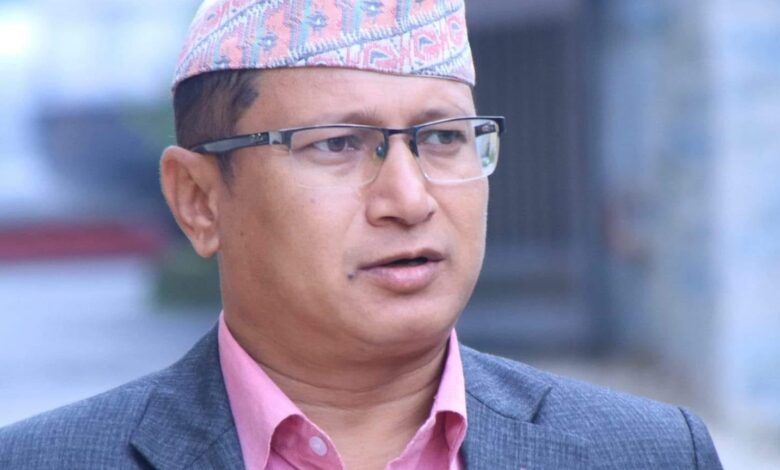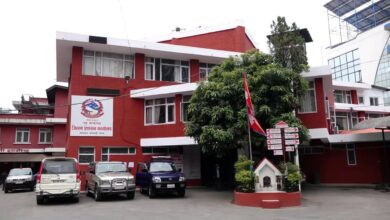American Influence in Nepal: Strategy, Network, and Impact

# Prem Sagar Paudel
The influence of the United States in Nepal has been expanding continuously. American presence can be observed at multiple levels, including government, non-governmental, social, religious, and security structures. With a seven-decade-long strategic approach, the U.S. has deeply impacted Nepali society. To comprehend this influence, a thorough study of America’s strategies, operational institutions, policies, and security interventions in Nepal is necessary.
From the Khampa Rebellion to the Expansion of American Influence
The first phase of U.S. intervention in Nepal was the CIA-backed Khampa Rebellion. In the 1960s, following the failure of the U.S. initiative to support Tibetan guerrilla fighters against China, America retreated from direct military strategy in Nepal. However, it subsequently adopted a policy focused on expanding social, cultural, and administrative influence.
In 1963, during a meeting in Kerala, India, a plan was devised to promote Christianity in Nepal’s hilly regions. Through various social programs, American institutions exerted a profound influence on Nepal’s religious, cultural, and social structures.
At present, the U.S. appears to be adopting a strategy aimed at increasing ethnic and religious polarization in Nepal, thereby creating internal discord. The organization MN(O) is actively working to classify all Nepalis as Mongolians. Meanwhile, in districts such as Banke, Sunsari, Parsa, and Biratnagar, the influx of Rohingya refugees is being systematically facilitated.
The Influence of the American Network in Nepal
The most powerful American organization in Nepal has been USAID. It was led by Ms. Sepideh Keyvanshad, followed by Deputy Mission Director Karen Welch, who played a key role in extending American influence over Nepal’s administrative, political, and social institutions.
Currently, 71 international non-governmental organizations (INGOs) operate in Nepal with American funding. Among the 185 INGOs registered with the Social Welfare Council, a significant number receive financial support from the U.S. These INGOs further expand their influence through over 2,133 Nepali NGOs.
In a recent parliamentary session, then-Home Minister Rabi Lamichhane stated that “there are people here who sell information to foreigners.” Similarly, Chitra Bahadur KC, leader of the National People’s Front, remarked, “An American party has emerged in our Parliament.”
American Penetration into Nepal’s Administrative Structure
Most senior officials in Nepal are under American influence. High-ranking personnel in the Ministries of Home Affairs, Defense, Foreign Affairs, Finance, General Administration, and Social Welfare are frequently engaged as strategic partners of the U.S. mission.
Since 2017, the influence of the U.S. in Nepal Police has grown substantially. American agencies have already implemented a £20 million, five-year program aimed at shaping Nepal’s security framework. The U.S. Embassy is actively involved in integrating technologies such as criminal databases, automated fingerprint systems, and capacity-building initiatives. Additionally, research units such as i2, polygraph, and police command centers are being established under American guidance.
Strategic U.S. Missions in Nepal
The United States has been advancing multiple strategic missions to deepen its influence in Nepal. The American network now extends from the central to the local government levels. With the implementation of federalism, U.S.-backed organizations have played a significant role in the formulation of legal frameworks such as the Provincial Police Act and the Investigation Bureau Act.
There is a concerted effort to transform Nepal into a U.S.-aligned region. The United States has been organizing and mobilizing the Tibetan community in Nepal to promote anti-China campaigns. More than 30,000 Tibetan refugees in Nepal are directly or indirectly involved in strategic American initiatives.
American Intervention in Nepal’s Security Forces
The U.S. has been conducting joint training programs with the Nepalese Army. Under the Indo-Pacific Strategy, Nepali security forces are receiving training in Counter-Insurgency (CI) in collaboration with American agencies. Additionally, Nepal Police is being financially supported through organizations such as ADB, Save The Children, WWF, and the UN.
American Media and Think Tanks in Nepal
To expand its influence in Nepal, the U.S. has activated a network of think tanks and media institutions. Organizations such as Social Science Baha and Open Society Foundation (George Soros) play a direct role in research and policymaking. Media entities like Himal Media, Center for Investigative Journalism Nepal (CIJ), and Centre for Peace and Conflict Studies (CPCS) operate under American influence.
Furthermore, Nepal Police Investigation, DFID, Asia Foundation, and similar organizations are involved in altering Nepal’s legal structures to align with American interests.
American Diplomatic Efforts to Weaken Nepal-China Relations
Efforts are underway to weaken Chinese investments in Nepal. The Nepalese government was pressured not to award the Jhapa Industrial Park project to China. Similarly, the Narayangadh-Butwal road project has been disrupted, and the Pokhara International Airport has been used as an example in the U.S.-led narrative that “Nepal is falling into China’s debt trap.”
Nepali Leaders Under American Influence
Many Nepalese leaders have close ties with the U.S. and have sent their children to America. Sher Bahadur Deuba, President of the Nepali Congress, has family members residing in the U.S. Similarly, former Foreign Minister Sujata Koirala has been linked to foreign citizenship claims. Many senior political figures maintain direct relations with the U.S. and possess Diversity Visa (DV) or Green Card status.
However, America’s most significant investment in Nepal appears to be within the media sector.
Consequences of U.S. Influence in Nepal
The expansion of American influence in Nepal is evident from the central to the local levels.
Administratively, Nepalese officials have been integrated as strategic partners of U.S. missions.
In the security sector, Nepal Police and the Army are undergoing restructuring to align with American strategies.
Socially, efforts are being made to intensify religious and ethnic polarization.
Politically, Nepalese leaders have become key actors in executing U.S. strategic agendas.
Conclusion
From a practical standpoint, the growing influence of the U.S. in Nepal suggests that China needs to strengthen its grassroots-level engagement with Nepal. So far, there has been no effective counter-strategy against American influence, leading to Nepal becoming an increasingly critical part of the Indo-Pacific strategic framework under U.S. policy.
Thus, China must adopt a proactive approach to empower its allies in Nepal and enhance its economic, cultural, and strategic ties with the country.







